For the week of March 25-March 31, average weekly soil temperatures at 2 inches among crop reporting districts ranged from 43oF to 54oF (Figure 1). Differences can be quite large, based on local soil moisture, residue, and soil types. For instance, the weekly average at Hill City is 50oF, while it is 44oF at the Sheridan mesonet.
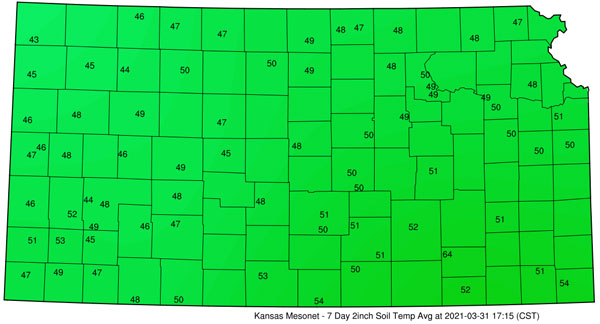
Figure 1. Average soil temperatures at 2-inch soil depth for the week of March 25-March 31, 2021 (http://mesonet.k-state.edu/).
Climatological normal 2-inch soil temperatures typically reach 55oF by April 12 for Parsons, Since the February cold spell, temperatures have been tracking near-to-slightly above normal (Figure 2). The typical 55oF timeframe becomes later with northwest extent across the state. At Colby, temperatures have been below average for the last several weeks with a climatological normal 55oF date of April 20 (Figure 3).
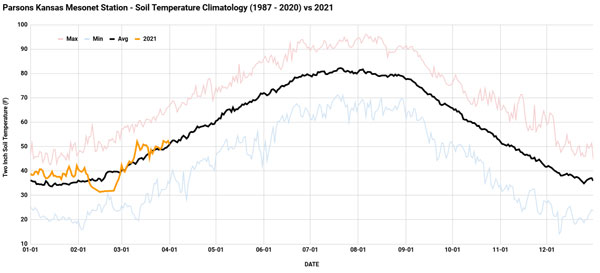
Figure 2. The 2-inch soil temperatures measured at Parsons in 2021 (orange line) compared to the climatological normal for that location (black line represents the average). Source: Kansas Mesonet
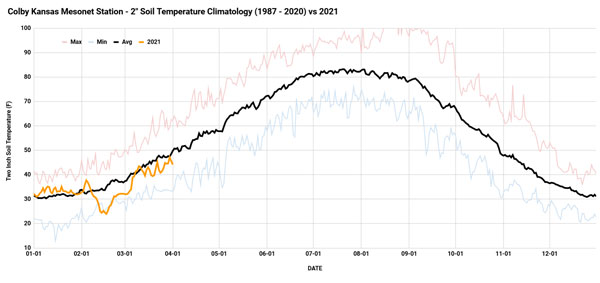
Figure 3. The 2-inch soil temperatures measured at Colby in 2021 (orange line) compared to the climatological normal (black line represents the average) for that location. Source: Kansas Mesonet
Average air temperatures ranged from 44oF to 51oF, with the coolest temperatures in the northwest and the warmest in the southeast (Figure 4).
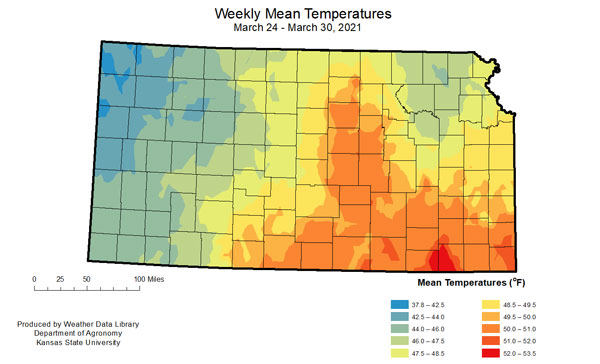
Figure 4. Weekly mean air temperatures for the week of March 24 – March 30, 2021.
Projections for the coming weeks call for warmer-than-normal temperatures statewide (Figure 5). In addition, less moisture than normal is expected, with next week expected to be dry (Figure 6). This will speed the process of warming up the soils (Figure 7).
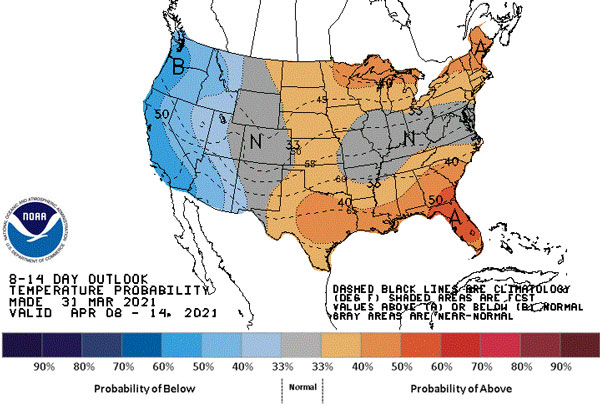
Figure 5. 8 to 14-day outlook temperature probability for April 8 – April 14, 2021 (NOAA).
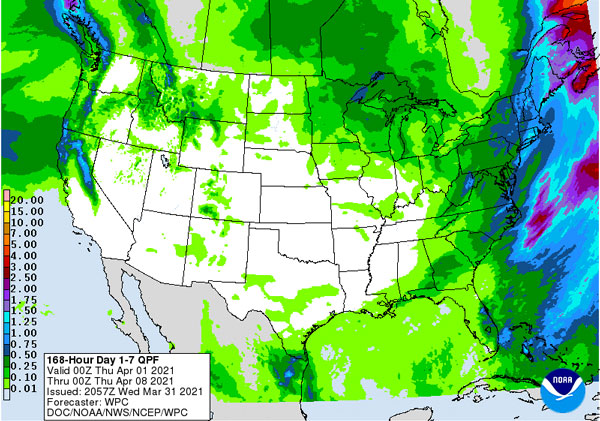
Figure 6. Quantitative Precipitation Forecast for April 1 – April 8, 2021 (WPC)
The actual change in soil temperatures in any given field will be affected by amount of residue cover, soil moisture, and landscape position. Wet soils under a no-tillage system will be slower to warm. Dry soils will fluctuate more rapidly, matching air temperatures, particularly if skies are clear.
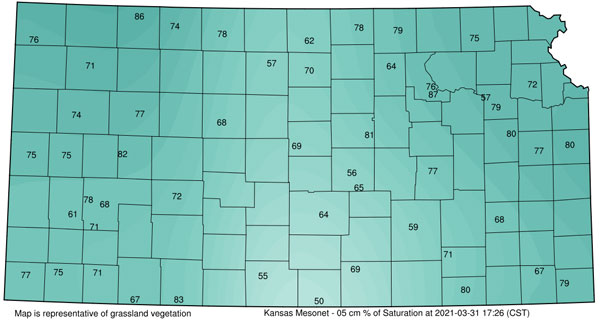
Figure 7. Soil moisture as of March 31, 2021 (Kansas Mesonet).
Current moisture status across Kansas is moderately wet, with the largest departures in precipitation in the southwest corner (Figure 8). Projections for the start of April are for precipitation to be below-normal for most of Kansas (Figure 9).
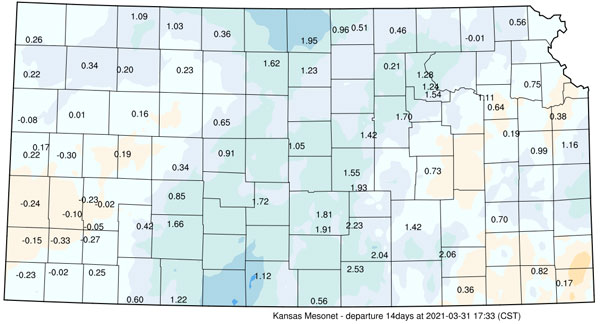
Figure 8. Departure from normal precipitation for the 14 days ending March 31, 2021.
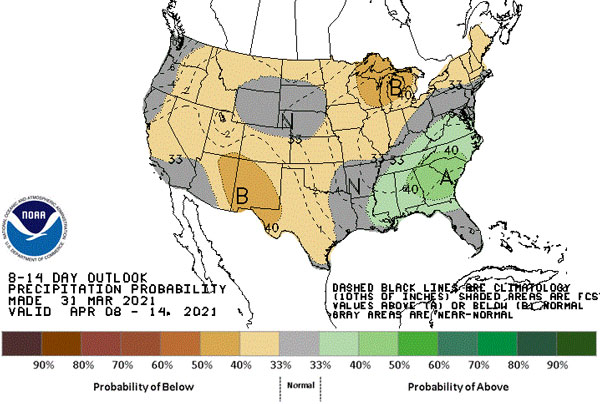
Figure 9. 8 to 14-day outlook precipitation probability for April 8 – April 14, 2021 (NOAA).
Optimal soil temperature for crop emergence
Every summer row crop has an optimal soil temperature for emergence. A minimum for corn is 50oF for germination and early growth. However, uniformity and synchrony in emergence is primarily achieved when soil temperatures are above 55oF. Uneven soil temperatures around the seed zone can produce non-uniform crop germination and emergence. Lack of uniformity in emergence can greatly impact corn potential yields. This is particularly true for corn, since it is the earliest summer row crop planted. When soil temperatures remain at or below 50oF after planting, the damage to germinating seed can be particularly severe.
Impact of a hard freeze on corn
Corn is also more likely than other summer crops to be affected by a hard freeze after emergence if it is planted too early. The impact of a hard freeze on emerged corn will vary depending on how low the temperature gets, the intensity and duration of the low temperatures, field variability and residue distribution, tillage systems, soil type and moisture conditions (more severe under dry conditions), and the growth stage of the plant. Injury is most likely on very young seedlings or on plants beyond the V5-6 growth stage, when the growing point is above the soil surface.
The average day for last spring freeze (32oF) is quite variable around the state (Figure 10). The largest variability is from southeast to northwest Kansas; with the earliest last spring freeze date for the southeast region (April 5-15) and latest for the northwest area (>May 3). Corn planting dates before April 15 in the southeast region would increase the likelihood of the crop suffering from a late spring freeze. Similar conditions can be projected for northwest Kansas if corn is planted before May 3.
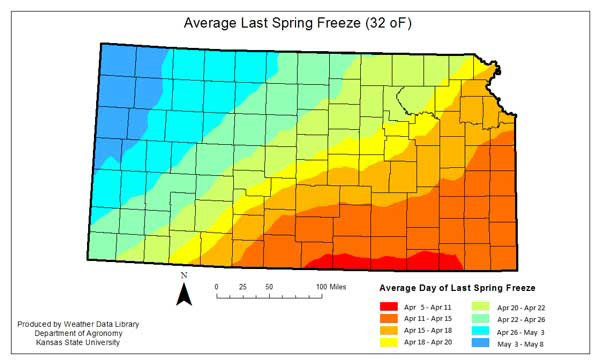
Figure 10. Average last spring freeze (32 degrees F) for Kansas.
Producers should consider all these factors when deciding on the optimal planting time.
More information about the planting status of summer row crops will be provided in upcoming issues of the Agronomy eUpdate. Stay tuned!
Ignacio Ciampitti, Farming Systems
ciampitti@ksu.edu
Mary Knapp, Weather Data Library
mknapp@ksu.edu
Christopher “Chip” Redmond, Kansas Mesonet Network Manager
christopherredomond@ksu.edu